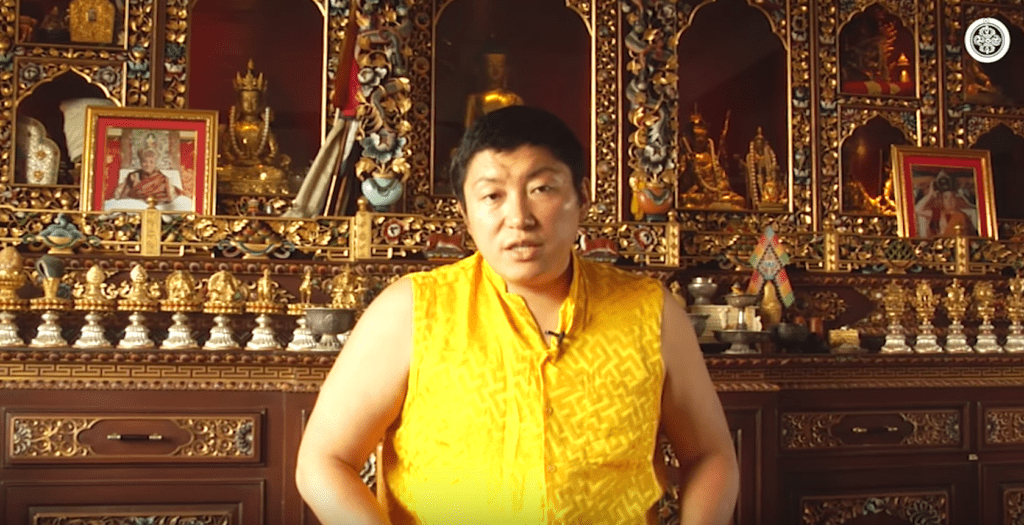Dear friends near and far
Happy Guru Rinpoche Day. Today I would like to speak on the essences of the three vehicles to remind all of you, as we are all kind of practitioners of Dharma. Some of us are lazy. Some of us are very diligent. Some of us, we are beginners. Some of us, we are advanced. But whatever level we are, we need to understand the meaning of renunciation. Renunciation is very important to understand and experience and to try to perfect it in the practice. Basically, renunciation from the condition and cause of suffering, because of wanting to be free from sufferings or wanting to be free from the condition of suffering and the cause of suffering. So what is the condition of suffering? It is wrong perceiving or negative perceiving such as: my ego is good. Ego is existent and good. And samsara is happiness. Samsara is happiness and bliss and every experience is permanent. This kind of perceiving is very harmful perceiving for a practitioner or for anyone. So, it is very important to know that the lack of renunciation of wrong perceiving makes our practice decline, and sometimes creates obstacles.
Now, the cause of suffering is ego-clinging. All the time, the Buddha teaches to be free from ego-clinging, and I have so much ego-clinging. Sometimes I have less, and sometimes it is a little bit up, and sometimes a little bit down. But we always need to be mindful that it is very important to reduce our ego-clinging. How do we know if we have ego-clinging? We have lot of negative thoughts, negative emotions, and negative reactions. From there we can actually know if we have very strong or if we have less ego-clinging.
If you have the renunciation mind or the wish, desire or thoughts to be free the from the cause and condition of sufferings, that is the essence of the first vehicle of the Buddha’s teaching. Now the essence of the second vehicle, the second teaching, the Mahayana, is compassion and good-hearted action. Compassion based with the wish to be enlightened. So we really need to begin with the good heart and the good heart needs to be developed by compassion and loving-kindness. But in the beginning, we need to understand and feel and try to apply the good heart. Then we need to understand and practice compassion and loving-kindness. And with that compassion we need to really want to gain the enlightenment of the Buddha. This is how we develop our bodhichitta. This is called “bodhi-chitta,” “great heart” or “great motivation to be enlightened.”
When practicing the third vehicle’s teaching, it is very important to have confident understanding, have dignity, be very decisive or believe that all other beings’ nature has Buddha: that the Buddha is always the nature of all the beings. That kind of understanding and experiencing. Many of you have no belief in this or you need to decide that we, all sentient beings, all have Buddha-nature or the enlightened Buddha. No matter how bad sentient beings are, or how good sentient beings are, there is no difference regarding their nature. All beings have Buddha-nature. That is the third vehicle’s essence.
Now without this third vehicle’s essence, we are not able to practice well. So without renunciation, we cannot practice the path of the Shravakayana or Pratyekabuddhayana, which are basically the Hinayana path. And without a good heart, loving-kindness, compassion, and bodhichitta, we cannot begin the practice of Mahayana. Similarly, with regards to having trust, confidence, decisiveness or faith that the essence of all beings’ nature has the Buddha, that we have Buddha-nature or that the enlightened Buddha is inseparable from all; without that, you cannot practice the third vehicle or the Vajrayana path. For this reason, I wanted to send a short message on the three essences of the three vehicles.
Thank you very much and practice well. I’m sending you much love and care and prayers from wherever I am. Bye.
Sarva Mangalam,

Phakchok Rinpoche






Responses